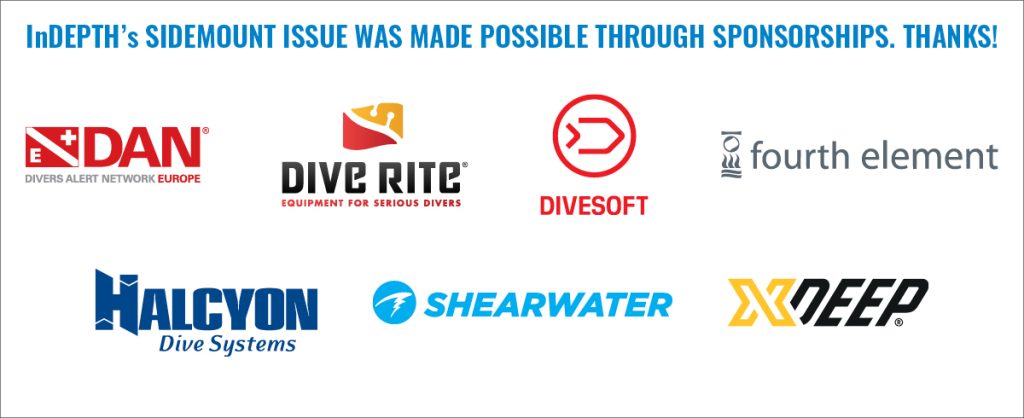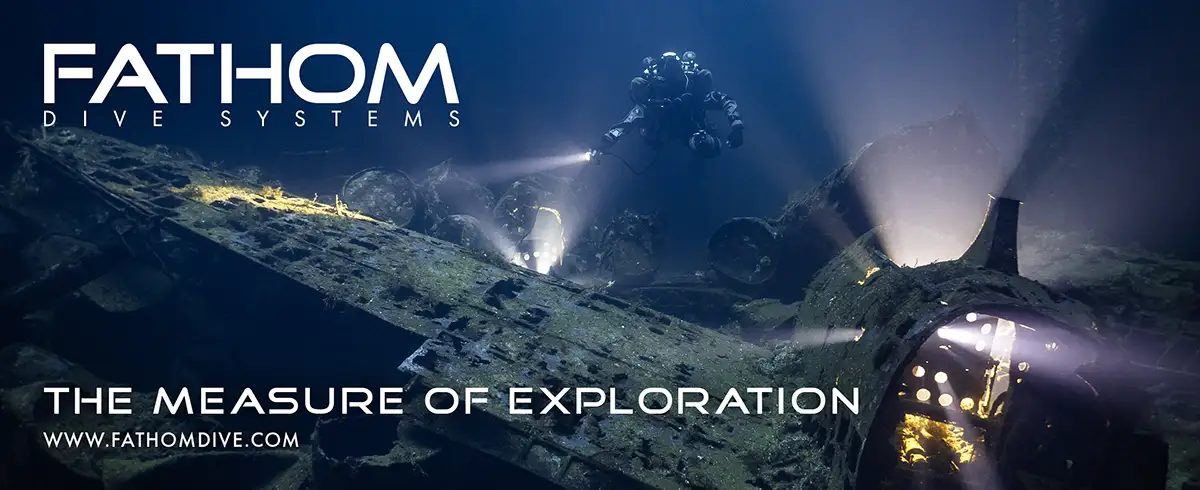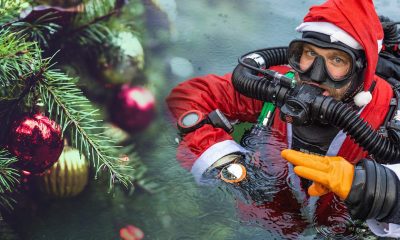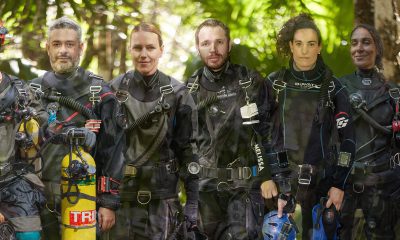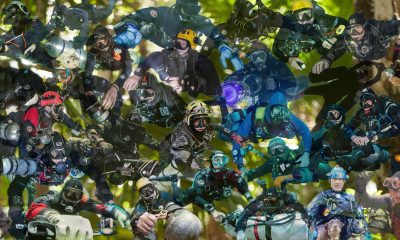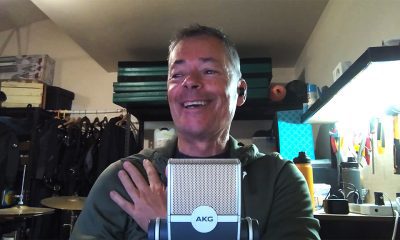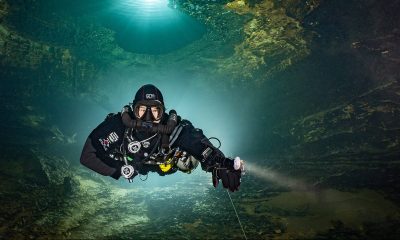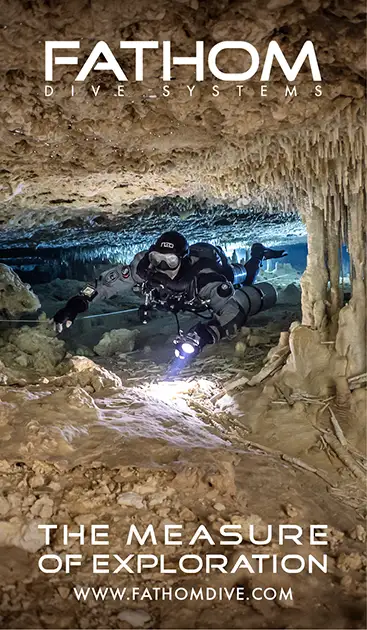Community
The Who’s Who of Sidemount
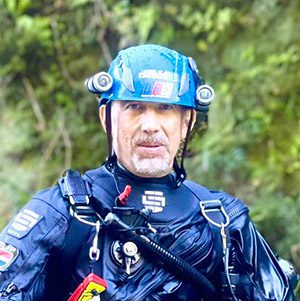
Phillip Lehman
Phillip is a rare and incredibly multi-talented individual. He was one of the pioneers of graffiti art, is a music and film director, and a keen surfer. He is included in this list for his exploration projects in Mexico and the Dominican Republic where he was a founding member of the Dominican Republic Speleological Society. He partners with Patrick Widmann on exploration projects in remote locations such as Madagascar. He is an avid diver of the KISS Sidewinder CCR and has been prominent in communicating its benefits for cave exploration.
What is sidemount to you?
From a diving point of view, sidemount is hands down the most versatile tool for diving. It is a configuration that offers not only true redundancy but also the flexibility to dive and adapt to any conditions in all caves without any of the severe limitations of backmount. From a logistical point of view, since sidemount can be used with any single cylinder it is a system that can be easily used anywhere in the world, at any dive shop. In Madagascar for example, on our first recon, we used mixed size tanks from all kinds of ghetto dive shops, that was all that was available and it worked perfectly.
What can be improved in sidemount?
I think that good sidemount training standards are pretty much the norm now, there is a generally accepted good basic sidemount “DIR” configuration upon which everyone can build in specific hose routing, clip positions bungees etc. to suit his or her needs so in general most divers are streamlined and in trim as compared to ten years ago. However the one thing no one has come up with until the XDeep NX700 first stage is a hose routing that comes off parallel to the body which is way better and more streamlined than all other first stages that come off perpendicular to the body. [Ed.note: The xDeep NX700 first stage has been recalled by the manufacturer]. I would like to see more regulator brands do the same and for true sidemount first stages to become a commonplace piece of gear.
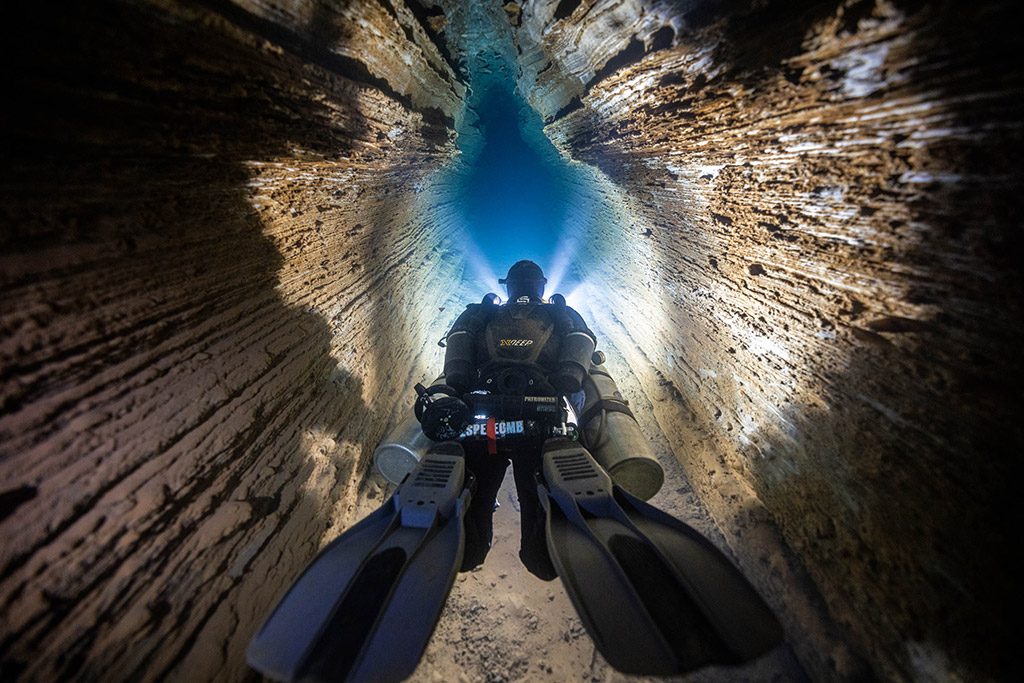
Was there an epiphany moment for you with sidemount?
I discovered the limitation of double cylinders immediately after finishing my full cave training in the Dominican Republic in 2006. I found an unexplored cave near my house but to access the water you needed to climb down a dry cave with a series of restrictions that did not really allow doubles to pass easily. I had two options, take apart a set of doubles and reassemble at the water (a major hassle) or find another way. By chance the next day I met Michael, a Swedish cave diver, who was on a dive trip and was diving an Armadillo. Knowing nothing of sidemount at the time and this being in the pre-YouTube days there were no videos of any sort on sidemount I was blown away the instant I saw this amazing thing called sidemount and have never looked back since. I always hear the argument “yeah but if I am diving on a boat in rough seas then I prefer doubles” well I say if the sea is so rough that doubles actually do become an advantage over sidemount, I am canceling the dive.
Who should not use sidemount and why?
Anyone who considers managing two separate gas sources task loading should not be diving sidemount in caves in fact that same person should not be diving backmount in caves either.
What would have been different with your exploration if sidemount did not exist?
If I would have to explore all the caves I have found all over again but in double back-mounted cylinders I would say that about 60% of the passages would not have been discovered. It is not often that an entire system is too small to dive doubles, that rarely happens, however what is very common is that huge cave systems and sections are accessed by tight sidemount only restrictions and are therefore off limits to back mount divers. A good example is Anjanamba in Madagascar, Africa’s longest flooded cave, many of the sections have numerous sidemount restrictions followed by crazy big sections and so on. Without a sidemount configuration over half this cave would not be accessible.
Return to: The Who’s Who of Sidemount
DIVE DEEPER
Speaking Sidemount: E016 – Dominican Republic Cave Exploration with Phillip Lehman
Speaking Sidemount: E036 – Somos Los Cenotes featuring Phillip Lehman, Natalie Gibb & Vincent Rouquet-caltha
